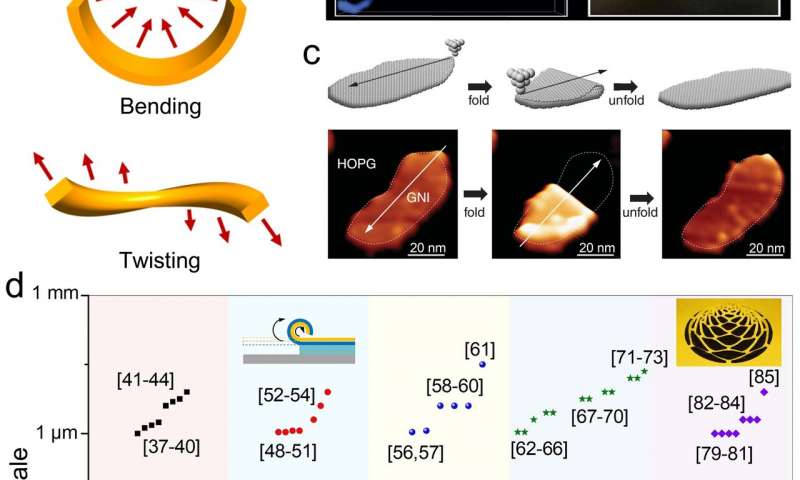3-D micro-/nanofabrication holds the key to building a
large variety of micro-/nanoscale materials, structures, devices,
and systems with unique properties that do not manifest in their
2-D planar counterparts. Recently, scientists have explored some
very different 3-D fabrication strategies such as kirigami and
origami that make use of the science of cutting and folding 2-D
materials/structures to create versatile 3-D shapes. Such new
methodologies enable continuous and direct 2-D-to-3-D
transformations through folding, bending and twisting, with which
the occupied space can vary “nonlinearly” by several orders of
magnitude compared to the conventional 3-D fabrications. More
importantly, these new-concept kirigami/origami techniques provide
an extra degree of freedom in creating unprecedented 3-D
micro-/nanogeometries beyond the imaginable designs of conventional
subtractive and additive fabrication.
Kirigami/origami: unfolding the new regime of advanced 3-D
micro-/nanofabrication with ‘folding’




